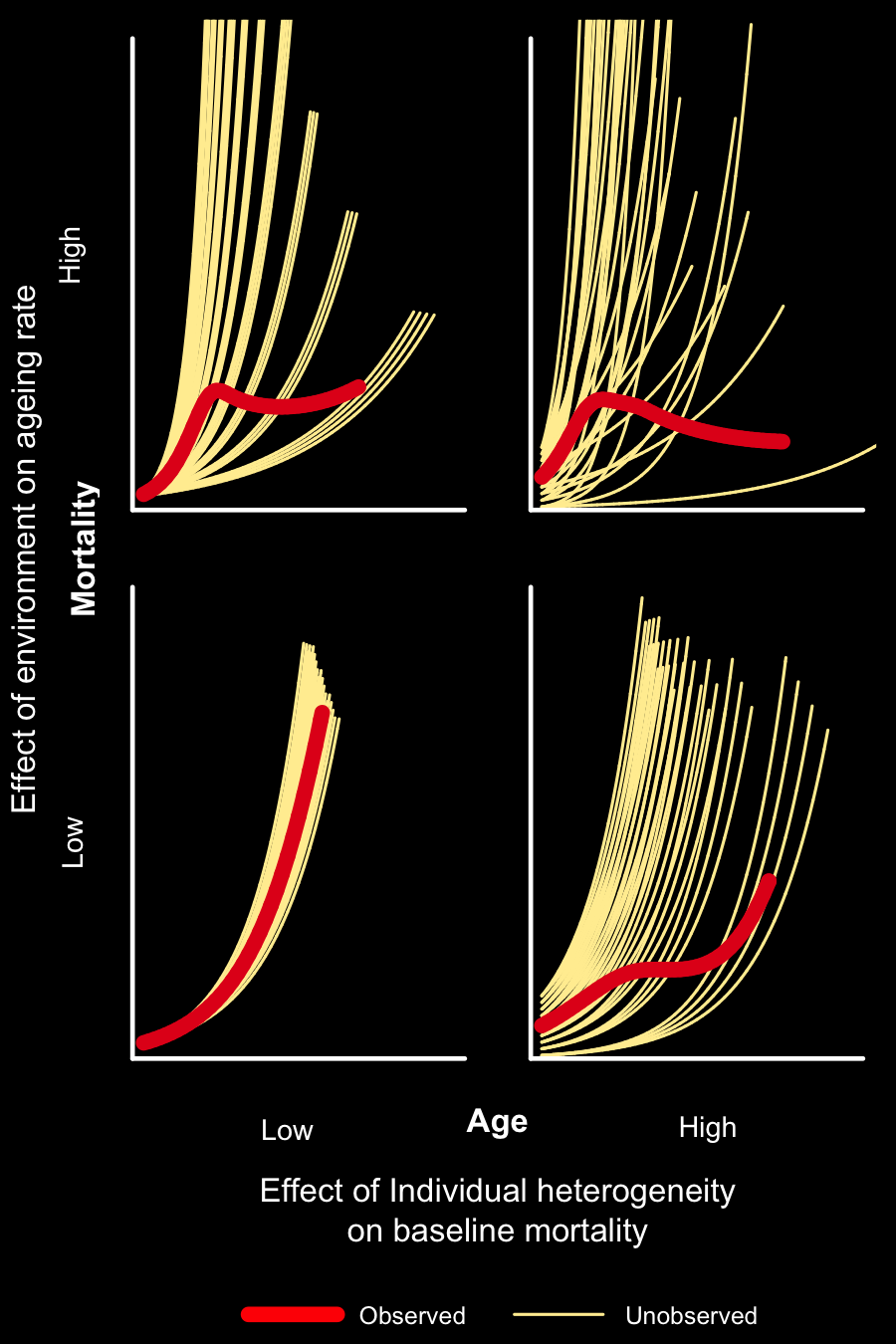

|
| Home | People | Projects | Publications | Contact |
Frailty and environment on mortalityRecent studies have revealed that there is a striking diversity of age-specific trajectories in demographic rates across the tree of life (Jones et al. 2014, Nature 505:169). Although some of these trends in mortality have been described theoretically (Vaupel and Yashin 1985, Aalen 1994, Baudisch and Vaupel 2012), current statistical methods cannot yet reproduce the astonishing variety of age-specific trajectories of mortality - and the unobserved processes that produce them - for populations under natural conditions. |
 |
 |
The figure above depicts hypothetical scenarios of the combined effect of environmental factors on ageing rates and the effect of individual heterogeneity on baseline mortality. The observed red trajectories bear great resemblance with several of the empirical age-trajectories of mortality depicted in Jones et al. (2014), where the authors explored these patterns across a wide number of taxonomic groups. This resemblance between the actual population level trajectories of mortality and our theoretical trajectories opens interesting avenues of research and hypotheses on the mechanisms by which environmental variables and individual heterogeneity affect mortality in wild populations. The graph to the left shows that, in sparrowhawks (Accipiter nisus), sex differences in mortality are primarly driven by individual heterogeneity, depicted as the variability in the level of robustness or frailty of individuals in each sex (Colchero et al. 2017). Because the higher proportion of robust females in the population, the population level mortality is lower in females than in males. |
|
In order to explore these trends, we are developing statistical methods to understand how demographic rates, and in particular mortality, are regulated by environmental factors, what is the role that individual differences in frailty (i.e. individual heterogeneity) play in shaping them, and how the environment and individual heterogeneity interact to govern demographic rates. With the masters student Burhan Kyakoglu, we have developed a mixture model that allows testing the effect of individual heterogeneity on the Gompertz rate parameter and, therefore, on ageing rates (Fig on right, Colchero and Kiyakoglu, 2020). Also, with the two masters students Janne Eriksen and Sarah Nielsen we have developed multilevel modesl that allow testing the effect of environmental variables on the parameters of parametric mortality functions. |
 |

|